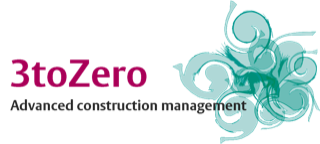The iBook format allows text, integral PowerPoints, video, audio, tests and quizes to give the widest possible way to access and learn about this complex subject in the most manageable way possible.

The multiple elements necessary to develop the Technology Cluster approach are set out in the diagram above. Each element is described in detail in each of the chapters. Chapter one sets out the case for the need to develop a new approach to the management of construction projects. We have called it advanced construction management because the approach builds on years of development and whilst, when integrated is a radical approach, many of the parts are in common practice, just not linked into a coherent model. In Chapter two the concept of the Technology Cluster is defined together with the reasoning as to why this is the next significant development in construction management thinking and practice. The Management Cluster is introduced as the key collaborative relationship between client, design and production. An essential characteristic of modern construction is to achieve effective communication across all parties to speed decision making and the necessary structures and roles are set out in Chapter three. Possibly the most radical development is that of work place design. The Work Area Control discipline to set up and manage a clean, safe work place to achieve high levels of productivity is described in Chapter four. These chapters set out the strategy for creating the new construction environment. The following chapters set out the implementation process.
In Chapter five the roles and responsibilities for managing the Technology Clusters is described. Buying the various inputs is described in Chapter six to ensure that a consistent production oriented organisation is assembled. The work area control concept requires that a different approach to schedule development is required and is described in Chapter seven. Understanding risk of a potentially fragmented supply chain is essential and developing the appropriate coordinated strategy is set out in Chapter eight. Finally the requirements for effective project governance are set out in Chapter nine.
